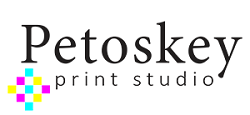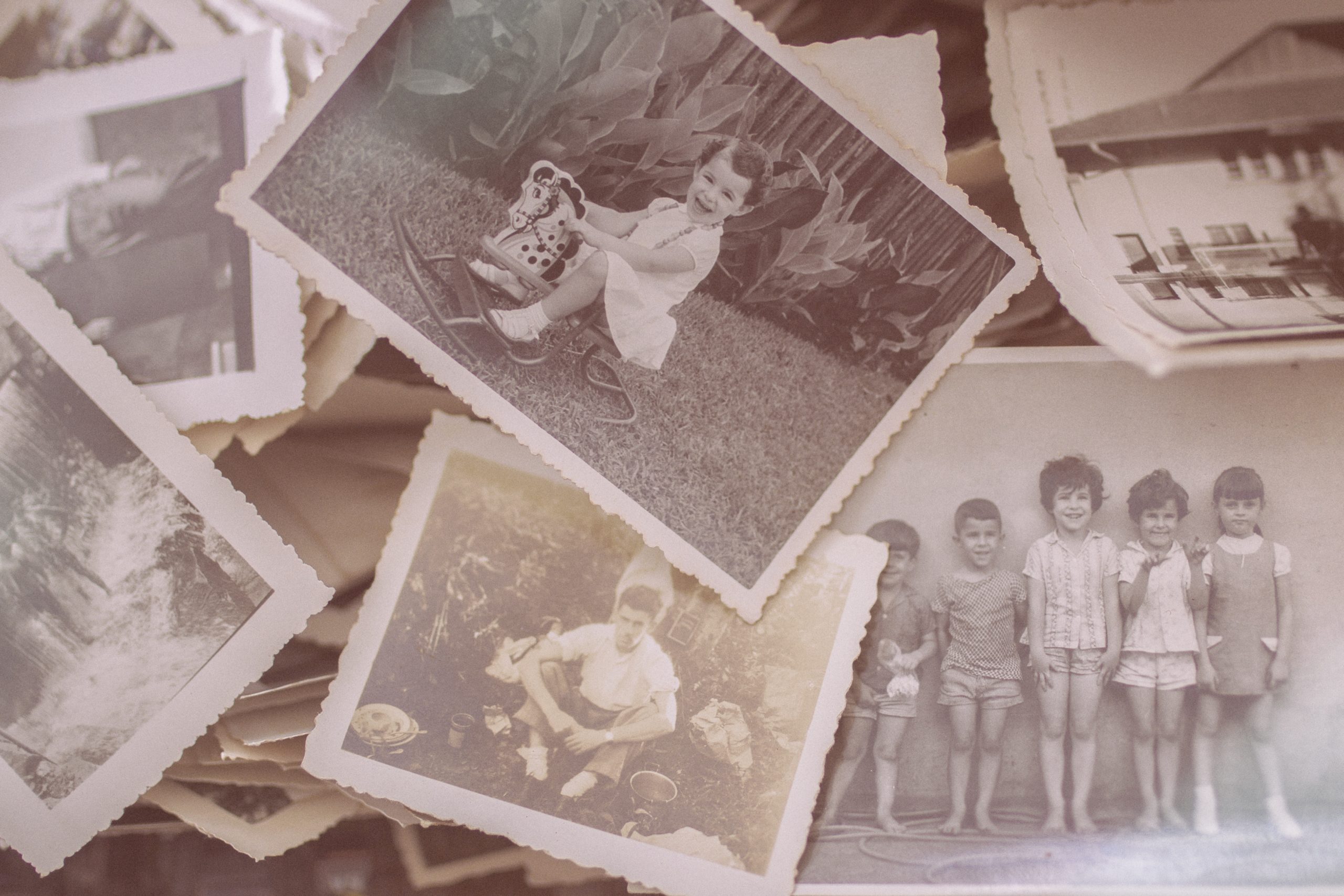Why you need UV glass to protect your photos from fading
Chances are you’ve looked at old photos that have been on display in a family home for many years and noticed some discoloration or fading in the parts of the image or photo paper that were exposed to light. If the photos were removed from frames after long periods of time, they likely have stark areas of less deteriorated coloration forming an unattractive border around the image where they were covered by mats or the edges of a frame. Maybe you simply remember your photos being brighter or more vibrant when they were first printed.
Unfortunately, at Petoskey Print Studio, we often see badly faded and discolored images when we are asked to scan and repair vintage photographs, and while we can restore color to almost all faded photos, it can also be expensive and inconvenient for our clients. Indeed, the best way to keep photos sharp and clear is by making sure they aren’t at risk for damage in the first place.
Color fading is something that happens naturally to printed artwork and photos that remain unprotected under most lighting conditions, but the good news is that it is completely preventable. Ultraviolet light is especially destructive because of the way it breaks down the chemical bonds that keep your images bright and colorful. Obviously, sunlight exposure is damaging to skin, fabrics, and, of course, photos and artwork, but while most people take care to protect themselves from the sun’s harmful ultraviolet light with sunblock, hats, and sunglasses, many aren’t aware of the need for or capability of better framing materials when it comes to preserving the photos in their homes.
What is UV glass?
The most common reason your photos fade, discolor, and bleach is because they weren’t properly protected by UV-coated glass when they were framed. UV glass is essential when it comes to preventing fading and color loss because it blocks a large percentage of UV light from ever reaching your photos, while normal glass will let all damaging rays pass through and negatively affect the image. It’s important to recognize that, when properly framed, artwork will last decades longer than when framed with cheap materials or left unframed, and UV glass is a key component of that preservation.
The way UV glass works is simple: there is an invisible, thin film coating on the side of the glass facing inside toward the artwork which filters nearly all UV light. For those looking at and caring for the frames, UV glass looks and behaves just like regular glass; it doesn’t affect the clarity of the images or the exterior cleaning process in any way. Yet as time goes on, the images (and whatever mats or other materials that may be included in the framing package) will retain their color, vibrance, and contrast far better than they ever could under normal glass.
Do you need UV glass?
Our clients often wonder, “Do I need UV glass for my framed artwork?” The short answer is, for any framed piece that you want to last longer than a couple years, UV glass is a must. Unsurprisingly, this includes almost everything. If you’re willing to put the time, effort, and money into a nice display for a photo or piece of art, chances are you want it to look good for as long as possible, and anything worth framing is worth framing right.
This includes photos and artwork printed on lower-grade print media. Movie posters, one-hour photo prints, and newspaper clippings are examples of commonly framed items that typically aren’t printed on the highest quality paper or from the most reliable printers. Unprotected, these items will fade at a much faster rate than high-quality fine art prints. UV glass will greatly reduce the risk of those images degrading after just a few years.
Framing is an investment, whether you’re framing personal items, heirlooms, or valuables, and UV glass, because its importance so heavily outweighs its cost, provides arguably the best value among framing components. Many good frame shops will use UV glass as their standard glazing because it keeps art well protected while remaining relatively economical. It’s an easy choice with virtually no downside.
Even still, some frame clients wonder if they need UV glass if they keep their frames in darker areas of their homes or away from large windows. Unfortunately, even out of direct sunlight, photos are prone to fade from the UV light reflected off of surfaces and emitted from common household light bulbs. The non-UV-coated glass found in many of the cheaper frames you find in box stores will always result in faded images given enough time; the only sure way to minimize fading is to glaze it with UV-coated glass or acrylic.
How Petoskey Print Studio can help
Our custom framing service is dedicated to offering top-of-the-line conservation materials and methods so that your pieces leave safe and secure for years to come. This commitment starts with offering the best in UV glass and UV acrylic.
Our baseline glazing for custom frames is Tru Vue Conservation Clear Glass, which blocks 99% of indoor and outdoor UV light rays. Our higher-end glass product, Tru Vue Museum Glass, also blocks 99% of UV with an added anti-reflective coating that makes for a highly protective, nearly invisible premium glass product. If your project calls for lightweight, shatter-proof glazing, our Tru Vue Conservation Clear Acrylic (98% UV protective) and Tru Vue Optium Museum Acrylic (99% UV protective) are the ideal choices. We also offer other glazing options like Tru Vue UltraVue, an inexpensive glass with virtually no strong color-cast that blocks 70% of UV, so no matter the needs of your framing project, we can tailor our services to you.
If you have an existing frame with glass that you would like to replace with UV glass, schedule a consultation with us and we can provide you with a full quote for replacement. The longer photos sit without UV glass, the more damage they suffer.
Our range of services are built for the conservation of our clients’ photos and artwork. For the best protection against photodegradation, make sure to print your images on the highest quality print media you can find, such as our premium fine art and photo papers and archival canvas product. You can even get them mounted and matted with acid-free, pH-balanced materials through us.
If you have cherished photos that have faded or deteriorated over time, our photo restoration department can scan your originals, digitally fix their flaws, restore their color and brightness, and reprint them to look new again.
Written by Colin Fitzgerald

